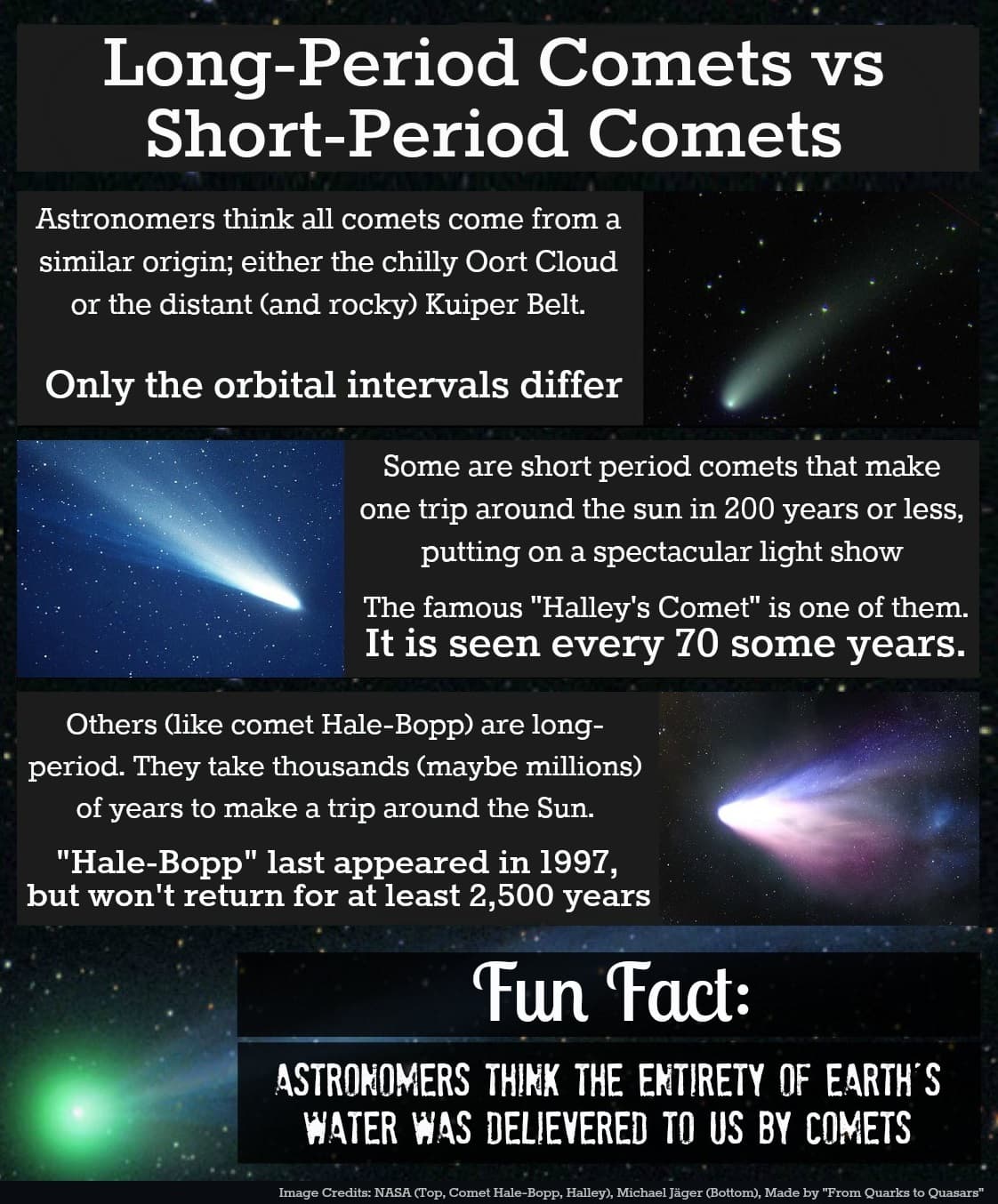Question:
"Once I read there was an asteroid (or perhaps it was a comet) that passed by Earth every 76 000 or so years. Is this possible, and if yes, what keeps it coming back instead of veering off into space?"
Asked By: SirWalona Burkie Sehularo
Answer:
First, to specify...there are two primary categories of comets. First, there are "periodic" comets, or short-period comets. Comets that fall under this classification have orbital periods of less than 200 years. One such comet is the famous Halley's Comet, which makes an appearance to Earthlings every 75-ish years. Another example of a long-period comet is Comet Hale-Bopp. It made its last visit to Earth back in 1997, but won't return for at least 2,500 years.
Long Period Comets:
Then, there are long-period comets. Comets of this designation generally have somewhat eccentric orbits. Whereby, it can take anywhere from 200 years to millions of years for a comet to come full circle; making one revelation around the sun. One such example is Comet West. It has an estimated orbital period of at least 254,000 years (but could be as much as 6.5 million years). It last visited Earth back in 1976. An uncertain amount of these comets are on unstable orbits and astronomers don't know when, or if, some of them will return to the vicinity of the sun or the inner solar system.
I'm not sure exactly which comet you're referring to, but there are many long orbital period comets and asteroids that make trips through the inner portion of our solar system every few thousands of years. The first that comes to mind is the long-period Comet Hyakutake, which closely encountered Earth back in March of 1996. Not only was it one of the most fabulous celestial events of the year (as such, it received the nickname of "The Great Comet"), but it was also one of the closest cometary approaches of the last 200 years, passing by from just 0.1 AU from Earth. Previously, scientists thought Hyakutake has an orbital period of about 17,000 years, but that number was increased exponentially due to gravitational perturbations of the outermost icy objects in our solar system, increasing its estimated orbital period by about 70,000 years.
Where They Come From:
Most of the long-period comets originate from the Oort Cloud, which is about 1,000 AU from the sun. Whereas, the short-period comets are thought to have originated in the Kupier belt, which lies past Neptune (and extends about 30-100 AU from the Sun) and is home to Pluto, Eris, Haumea and MakeMake--the dwarf planets of our solar system.
To answer the last portion of your question, comets such as Halley, Hale-Bop, and Hyakutake pass by Earth on a predictable basis much in the same way as the planets in our solar system do; They are gravitationally bound to the sun despite their eccentric elliptical orbits. However, gravitational perturbations from the gas-giants in our solar system can, and will, cause a comet's orbit to change, potentially enough for it to exit our solar system entirely, thus creating another category of comets known as single-apparition comets.
Share This Article
